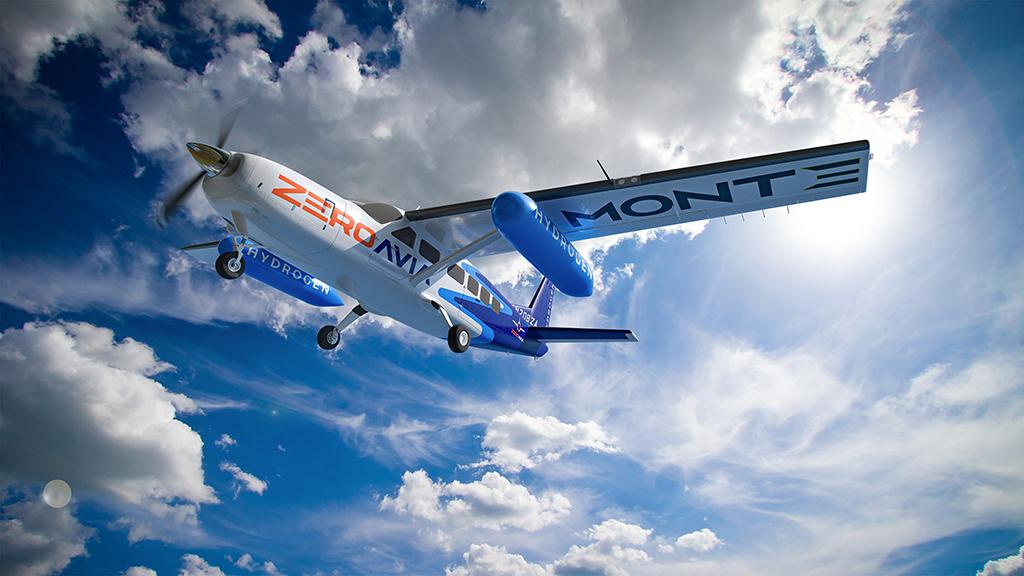
TECHNOLOGY
Volocopter has flown its four-seat, longer-range VoloConnect winged electric vertical takeoff and landing (eVTOL) air taxi, aiming for certification in 2026.
Joby Aviation has acquired German hydrogen-electric propulsion pioneer H2Fly, suggesting an intent to develop a longer-range version of its zero-emission eVTOL.
Joby has received its FAA Part 135 air carrier certificate, allowing it to begin aircraft operations ahead of the planned 2024 launch of commercial eVTOL service.
Electra.Aero has acquired Airflow, consolidating the rival startups’ programs to develop blown-lift distributed-electric short-takeoff-and landing regional aircraft.

Chinese startup Pantuo Aviation has conducted the first free-hover flight of a half-scale model of its planned Pantala Concept H ducted-fan eVTOL air taxi.
French startup VoltAero is to conduct route demonstrations in the Netherlands and Germany with its Cassio 1 hybrid-electric propulsion testbed.
DEFENSE
Germany is planning to purchase utility helicopters and enlarge its Boeing P-8 fleet using a €100 billion ($107 billion) special defense modernization fund. The country also has selected Boeing’s CH-47F over Sikorsky’s CH-53K for its Heavy Transport Helicopter requirement and plans to purchase 60 Block II Chinooks.
The U.S. Air Force’s Next-Generation Air Dominance fighter has begun engineering and manufacturing development based on progress from a prior DARPA program.
Lockheed Martin declined to comment after a news release by Safran Landing Systems Canada hinted at the existence of a secret aircraft project at the manufacturer.
The U.S. Air Force plans to field 22 Boeing E-7 airborne early warning and control aircraft to replace its 31-aircraft E-3 Sentry fleet, beginning in 2025.
Bell Textron Canada has received a $630 million contract to extend the life of Royal Canadian Air Force CH-146 Griffon helicopters into the mid-2030s.
Sukhoi and MiG have formally merged with parent company United Aircraft Corp., the Soviet fighter houses ceasing to exist as separate entities on June 1.
Lockheed Martin has delivered the 800th F-35, marking a new milestone for the 15-year-old production program.
The U.S. Air Force expects to make a production decision on the Boeing/Leonardo MH-139 helicopter in January 2023, a total slip of about 16 months because of FAA certification issues.
COMMERCIAL

Regional turboprop lessor Monte has agreed to purchase up to 100 hydrogen-electric powertrains from ZeroAvia for Cessna Caravans, De Havilland Canada Twin Otters and Dornier 228s.
Vietnam’s Vietjet Air has reaffirmed its order for 200 Boeing 737 MAX family aircraft, which it had put on hold after the grounding of the type in 2019.
U.S. startup regional carrier Connect Airlines has placed a firm order with Universal Hydrogen to convert 75 ATR 72-600 turboprops to hydrogen-electric propulsion.
EasyJet has set itself an interim target of reducing carbon emissions 35% by 2035 from a fiscal 2020 baseline.
The Swedish government has agreed to convert into equity around $2 billion of debt provided to Scandinavian Airlines during the COVID-19 pandemic.
The world’s largest regional aircraft lessor, Nordic Aviation Capital, has emerged from Chapter 11 with a significantly deleveraged balance sheet.
Flair Airlines is Canadian, the country’s transport adjudicator announced June 1, ending a challenge to the carrier’s right to fly in Canada.
South African regional carrier Comair filed for liquidation June 9. After 76 years of operation, the airline suspended flights May 31 after running out of cash.
SPACE
NASA is to add five more SpaceX Crew Dragon missions on a sole-source basis as it works with Boeing to certify a second system to ferry astronauts to the International Space Station.
NASA has selected Axiom Space and Collins Aerospace for a potential $3.5 billion public-private partnership for development, training and operation of a new-generation spacesuit (page 38).
Astroscale will build its Elsa-M multisatellite servicer, aiming for a late-2024 launch after a $15.9 million infusion from the European Space Agency and OneWeb.
VIEW FROM THE BELTWAY
Virginia Snags Another Aerospace Giant
Raytheon Technologies will move its global headquarters from suburban Boston to Arlington, Virginia, this summer, making it the last of the Big Five U.S. defense contractors to base its operations in the Washington region. The move into an existing Raytheon office tower near the Potomac River “increases agility in supporting U.S. government and commercial aerospace customers,” the aerospace giant says. But it is not expected to result in a large number of job shifts. Boeing announced last month that it is moving its home base from Chicago to Northern Virginia, following Northrop Grumman (2011) and General Dynamics (1991). Lockheed Martin is headquartered in nearby Bethesda, Maryland.
100 YEARS AGO IN Aviation Week
Near the end of World War I, the Glenn L. Martin Co.’s MB-1, a 10,000-lb. wood-frame biplane with a 72-ft. wingspan, became the first American-designed bomber purchased by the U.S. Army. Martin followed with a more powerful version, the MB-2, but skeptics questioned whether an aircraft could really drop enough bombs to sink naval vessels. That skepticism was answered with a 1921 test off the Virginia coast, where seven MB-2s outfitted with 2,000-lb. bombs sunk a massive captured German battleship, Ostfriesland, in 21 min. 30 sec., according to a Lockheed Martin history. The company touted the bomber in an advertisement in our June 12, 1922, edition. “Martin-built bombers have a reputation unequaled by any in the United States,” it boasted. The bombers were built in Cleveland, where Martin had been lured from California by local investors. The MB-2 helped make the Ohio city a leader in aircraft manufacturing, and Martin played a role in the establishment of Cleveland’s airport, according to a Case Western Reserve University write-up. But frequent crashes near the plant led the city to refuse to permit additional landing sites for larger aircraft, and Martin relocated to Baltimore in 1929. The company would go on to develop the B-26 Marauder, an Allied bomber that was used extensively during World War II.






